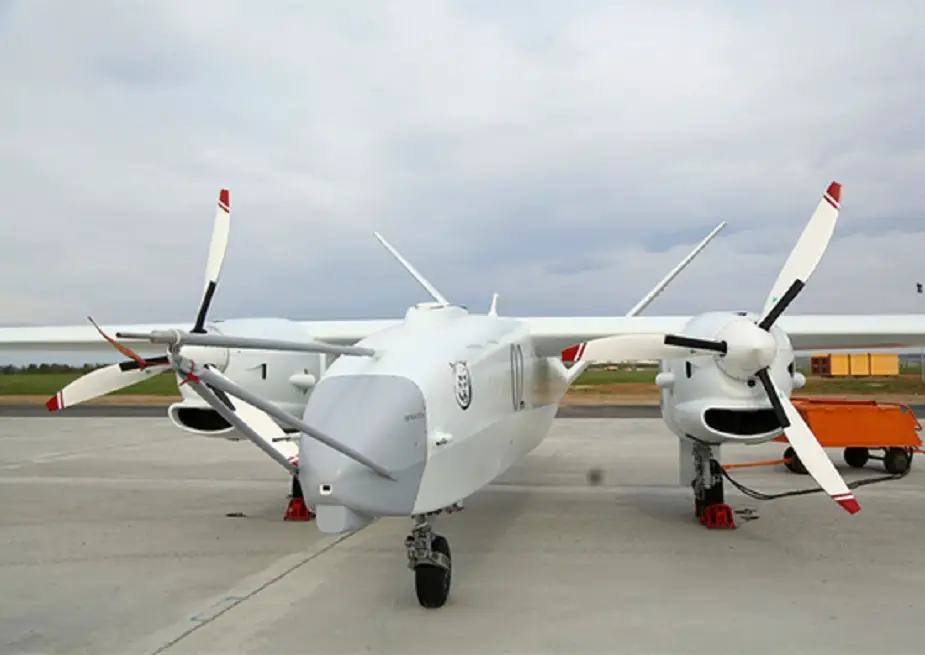Combat drone engagement is becoming a usual practice. The unmanned aerial vehicles (UAV) fight air defense and often win. Swarm tactic of drone engagement has emerged. It brings drone control to the foreground, as the usual operator-drone scheme often fails. Other technologies are necessary, the online Army Standard publication said.
Follow Air Recognition on Google News at this link
 Altius attack drone will have artificial intelligence elements to interact with fifth-generation Su-57 fighter jets (Picture source: Russian MoD)
Altius attack drone will have artificial intelligence elements to interact with fifth-generation Su-57 fighter jets (Picture source: Russian MoD)
The distribution of functions between small, less costly and numerous platforms provides better sustainability against risks and better adapts to the accelerating cycle of technical renewal. It is easier to design and produce multirole craft. They form squadrons, regiments and even divisions for the assigned mission in the indicated place.
The approach differs from the usual principle to build aviation complexes as “systems of systems”. The latter has drawbacks, including a high cost, limited adaptability and functional compatibility, as each part has a unique design and is integrated for a specific task.
The new approach creates the system from the bottom to the top and available or new elements are united to create a cumulative effect by methods which have not been previously considered.
The system is elastic and uses adaptive networks with an excessive number of elements. Firstly, it has to increase resistance to outside factors and faultless operation in general and protect it against unfavorable factors, such as adversary counteraction in combat or complicated environment in civilian operation. Secondly, excessive elements provide for mission implementation by various methods and the best one is selected according to the existing situation.
The control covers the whole group rather than individual drones. The group can engage in common missions automatically. The intellectual control has to independently determine priorities of the mission comprising a series of simple interrelated tasks.
The development of technologies will determine the success of a country in the military and civilian spheres. Unmanned vehicles operating in various medium are losing remote control and becoming more autonomous for interaction with other manned and unmanned aircraft. They will provide major advantages to the countries possessing the technologies.
A high interest in group engagement of drones is caused by promising prospects. It is clear that the variety and scope of groups will grow from several craft to major information-connected and heterogeneous drones comprising sophisticated large-scale systems.
It is necessary to design corresponding technologies to implement the concept of drone interaction in a group. There are several main issues to be resolved at the initial stage.
They include control of the configuration of a group of drones, distribution of missions and spatial location of the craft in a group, control hierarchy in the group, flight control by individual trajectories according to functional capabilities and geographic conditions, distribution of targets between drones and corresponding guidance to each craft, reconfiguration of the group according to combat losses and results of target attack.
The next research stage has to study control of drone groups. Although it is a distant matter, the Zhukovsky Institute believes the research should begin already now, the Army Standard said.
© Copyright 2020 TASS. All rights reserved. This material may not be published, broadcast, rewritten or redistributed.
















